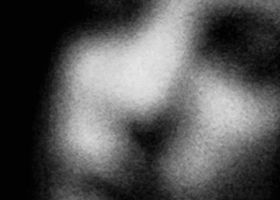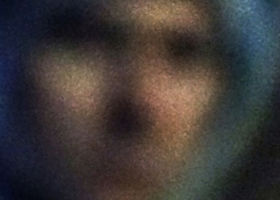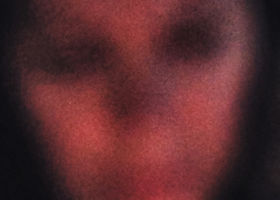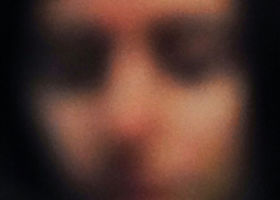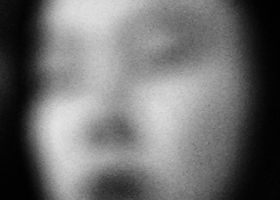Dix portraits issus de Matière Numérique ont été proposés pour le Magnum Photography Awards 2017.
J’ai reçu le 25 mai 2017 une critique (review) d’un-e inconnu-e directement sur mon compte Lens Culture. Comme cette critique n’est visible que pour moi seul, la voici reproduite, en anglais. Cette critique étant anonyme, il m’est impossible de la créditer.
À la suite de cette critique et parce qu’elle m’a interpelé, j’y ai répondu (feedback). Mais je ne sais pas si ma réaction sera lue, du moins par la personne qui a émis la critique. Alors voici également ma réponse, en anglais puis en français.
Review
Hi Marcol – thank you for showing these images and of course for sharing them. I admire your work very much!
The images are sound individually and as a group, so I find solid intellectual and graphic unity. It is interesting that when the images are viewed small on a grid they seem to have pixels that are flattened out, so the rendering allows the images to represent a face (portrait) more so than when they are viewed large for my artistic evaluation. When I see them large, the images illustrate your written work essentially much better: I see the artifacts you speak of, and the irregularity of contour when pixels are enlarged or blurred.
Still, I see faces more than concealed objects, though certainly my own subjective feelings and perceptions create much of the narrative I possess when I spend time with your work.
We know that a portrait is a constructed reality, but you have allowed the intent to be much more open. The contours/shapes of the faces are posed in classic studio styles and we recognize that. The position of the eyes, nose, chin cheeks and shape of the hairline each indicate the familiar genre of portraiture.
The essential idea that a portrait cannot illustrate the interior character of a person remains unchallenged in this work. I think the images reinforce portraiture more than sublimate. The images can be made into strong photographs with an intentional printing out method that creates significant form with the paper and ink, or photographic paper and printing process that initiates a strong conversation about the objects. Consideration will be given to size of the print and how that changes meaning.
This work is engaging and strong.
Keep up the good work!
Additional Recommendations
Recommended Books & Photographers
The Artist Statement: How and Why to Write Yours by Jennifer Schwartz
How to write an Artist’s Statement
Doing Documentary Work, by Robert Coles
Regarding the Pain of Others by Susan Sontag
On Photography by Susan Sontag
Article on Roland Barthes Camera Lucida
Recommendations for Gaining Exposure
Association of International Photogaphy Art Dealers
Other Resources
Feedback
Dear unknown reviewer,
By your words, I can read that you understand my work and appreciate it. I thank you very much. I also thank you for your advice allowing me to perfect my photographic work.
As you have noticed, the notion of scale in the visualization of my images plays an important role in my work. In fact, in this way, I try to arouse some disturbance to the viewer. Let me explain. From a distance (or in small format) the images look like portraits. At this distance they were given fully, conventionally, as classical portraits, in an unequivocal and common way. Perhaps I could say, by using a reference that you suggested to me and which I read many years ago, that we are dealing with the notion of studium described by Barthes. However the intrigue caused by the lack of information resulting from the distance of view encourages the viewer to approach the image (or enlarge its format). By thus wanting to know more the viewer loses the coherent view of the whole to see only the matter of which it is constituted. Thus there arises from this matter a disturbance and uncertainty that this is a disturbance in the sense of the punctum described by Barthes.
In my work, this material formed of so many points, pixels and algorithmic artefacts evidently comes close to, but without my intention, pictorial impressionism. However, it is only digital photography. Moreover it is precisely on what it constitutes that my present work is mainly based.
Honestly the graphic principle is not new. The Roman mosaics perfectly illustrated the qualities of this principle. Closer to us, impressionist painters such as Monet and Sysley and those pointillists such as Seurat and Signac made perfect use of the process. During the 20th century, other artists also exploited this way of making images. For example, mechanical dot screens have been used by artists who have diverted them from their technical purpose to give them real artistic value. To quote only two, there is Roy Lichtenstein who sublimated the mechanical screentone of offset printing and Jiro Taniguchi, whose use of mechanical screentone is not only pragmatic, to ensure a good impression of course, but also an artistic material by defining a particular style and creating atmospheres to accompany the stories that Taniguchi told.
In photography, the grain is present since the invention of the silver process. Its distribution in the emulsion is not mechanical, but stochastic. Yet it has often been seen as an obstacle to the representation of the real and its artistic value has also often been reduced to the romantic connotation that it conveys. I think, however, that grain is a real artistic matter. For proof, it is enough to observe the images of Jerry Spagnoli where the grain is treated like a poetic matter and where the notion of scale is very present.
In digital photography, the frame is more regular by the arrangement of photosites on the sensor. This brings it closer to a mechanical screen. But the use of image processing algorithms, blurs this regularity. In my current photographic work I use precisely this graphic quality as an artistic matter.
Your review let me think of another photographic characteristic. I refer to the blur as Hirochi Sugimoto uses it in his photographs of architectural objects. An example is the image he made of the Villa Savoye of Le Corbusier representing frontally the eastern facade of the building. When the image occupies a restricted portion of the visual field, the observer has no doubt about what he sees, immediately recognizes the Villa Savoye (if he knows it beforehand of course), but sees no detail. To better see this facade, the observer tends to fill his visual field with this image. And there, surprise ! Even larger the image on his retina, he will see no more details than when it occupied only a small portion. By this process, Sugimoto sublimates the iconic character of the building and only offers its essence free of details so quick to distract the eye. It retains only a schema, only its phantom.
Obviously I do not compare my work to that of the talented Japanese photographer. Yet I try, in a certain way, to retain only his phantom from reality. Or say, its bone. To make that what is seen no longer refers to the real photographed, but arises directly from the photographic process by revealing precisely this process.
My photographic portraits that you have seen no longer belong to a real that would have been (to borrow a concept so developed by Barthes) but belong to the matter itself of the photographic process. To better explain my work, I would borrow from Michelangelo what he says of the work of the sculptor, which is to liberate the form already contained in the block of marble. Thus, I try to update the image already present in the « emulsion » of the sensor by taking the picture and, for this to happen, the « emulsion » must be a matter present to the sight. In my case, a digital matter. Perhaps there is also an aesthetic « where reality exists only in terms of purely aesthetic and mental rules », as Alistair Crawford wrote of Giuseppe Cavalli work, for whom « the subject did not matter ».
Finally, a few words about transferring images from the screen to « paper ». I have already done some tests, especially with the use of a complementary black and white image (an alpha layer) from the basic image, to give some relief to a digital print on rigid support. But the tests are not yet conclusive and it’s difficult for me to find an adequate process for large format prints that take into account the digital material of images by giving them a material reality.
I would like to thank you again for your generous and constructive review.
Sincerely yours.
Réponse
Cher-Chère critique inconnu-e,
Par vos mots, je peux lire que vous comprenez mon travail et l’appréciez. Je vous en remercie vivement. Je vous remercie également pour vos conseils me permettant de perfectionner mon travail photographique.
Comme vous l’avez constaté, la notion d’échelle dans la visualisation de mes images joue un rôle important dans mon travail. En fait, de cette manière, j’essaie de provoquer un certain trouble chez le spectateur. Je m’explique. De loin (ou en petit format) les images semblent des portraits. À cette distance elles se donnent pleinement à voir, conventionnellement, comme de classiques portraits, d’une manière sans équivoque et commune. Peut-être pourrais-je dire, en prenant une référence que vous me suggérez et que j’ai lu il y a bien des années, que l’on a affaire à la notion de studium décrit par Barthes. Mais l’intrigue provoquée par le manque d’information résultant de la distance de vue incite le spectateur à s’approcher de l’image (ou à agrandir son format). En voulant ainsi en savoir plus le spectateur perd la vue cohérente de l’ensemble pour ne voir plus que la matière dont elle est constituée. Ainsi surgit de cette matière un trouble et peu-être que c’est là un trouble au sens du punctum décrit par Barthes.
Dans mon travail, cette matière formée de tant de points, de pixels et d’artefacts algorithmiques se rapproche évidemment, mais sans que cela soit mon intention, de l’impressionnisme picturale. Ce n’est pourtant que de la photographie numérique. C’est justement sur ce qui la constitue que mon travail actuel s’élabore principalement.
Honnêtement le principe graphique n’est pas nouveau. Les mosaïques romaines illustrent parfaitement les qualités de ce principe. Plus proche de nous, les peintres impressionnistes tels Monet et Sysley et ceux pointillistes tels Seurat et Signac ont fait un usage parfaitement maitrisé du procédé. Au cours du XXe siècle, d’autres artistes ont également exploité cette manière de faire des images. Par exemple, les trames mécaniques de points ont été utilisées par des artistes qui les ont détournées de leur finalité technique pour leur donner une vraie valeur artistique. Pour n’en citer que deux, il y a Roy Lichtenstein qui sublime la trame mécanique de l’impression offset et Jiro Taniguchi, dont l’utilisation des trames mécaniques est non seulement pragmatique, afin d’assurer une bonne impression évidemment, mais aussi une matière artistique par la définition d’un style particulier et la création d’ambiances propres à accompagner les histoires que Taniguchi raconte.
En photographie, le grain est présent depuis l’invention du procédé argentique. Sa répartition dans l’émulsion n’est cette fois pas mécanique, mais stochastique. Pourtant il a souvent été considéré comme un obstacle à la représentation du réel et sa valeur artistique a aussi souvent été réduite à la connotation romantique qu’il véhiculerait. Je pense pourtant que le grain est une réelle matière artistique. Pour preuve, il suffit d’observer les images de Jerry Spagnoli où le grain est traité comme une matière poétique et où la notion d’échelle est très présente.
En photographie numérique, la trame est plus régulière par la disposition des photosites sur le capteur. Ce qui la rapproche d’une trame mécanique. Mais l’utilisation d’algorithmes de traitement de l’image, brouille cette régularité. Dans mon travail photographique actuel j’utilise précisément cette qualité graphique comme une matière artistique.
Votre critique m’inspire une autre caractéristique photographique. Je veux parler du flou tel que Hirochi Sugimoto l’utilise dans ses photographies d’objets architecturaux. Un exemple est l’image qu’il a faite de la villa Savoye de Le Corbusier représentant frontalement la façade est du bâtiment. Quand l’image occupe une portion restreinte du champ visuel, l’observateur n’a pas de doute sur ce qu’il voit, il reconnait immédiatement la villa Savoye (s’il la connait préalablement bien sûr), mais n’en voit aucun détail. Pour mieux voir cette façade, l’observateur tend à remplir son champ visuel avec cette image. Et là, surprise! Aussi grande l’image soit-elle sur sa rétine, il ne verra pas plus de détails que quand elle n’en occupait qu’une petite portion. Par ce procédé, Sugimoto sublime le caractère iconique du bâtiment et n’en offre que son essence débarrassée des détails si prompts à distraire le regard. Il ne retient du réel qu’un schéma, que son fantôme.
Bien évidemment je ne compare pas mon travail à celui du talentueux photographe japonais. Pourtant, j’essaie, d’une certaine manière, de ne retenir du réel que son fantôme. Ou, plutôt, son ossature. Faire que ce qui est vu ne face plus référence au réel photographié, mais surgisse directement du procédé photographique en révélant justement ce procédé.
Mes portraits photographiques que vous avez vus n’appartiennent ainsi plus à un réel qui aurait été (pour reprendre un concept aussi développé par Barthes) mais appartiennent à la matière-même du procédé photographique. Pour mieux expliquer mon travail, j’emprunterais à Michel-Ange ce qu’il dit du travail du sculpteur qui est de libérer la forme déjà contenue dans le bloc de marbre. Ainsi, je tente de mettre à jour, par la prise de vue, l’image déjà présente dans l’ « émulsion » du capteur et pour cela il faut que l’ « émulsion » soit une matière présente à la vue. Dans mon cas, une matière numérique. Peut-être qu’il y a là aussi une esthétique « où la réalité n’est là qu’en fonction de règles purement esthétiques et mentales » comme l’écrivait Alistair Crawford à propos du travail de Giuseppe Cavalli pour qui « le sujet n’avait pas d’importance ».
Pour finir, quelques mots sur le transfert des images de l’écran au « papier ». J’ai déjà fait quelques essais, notamment avec l’usage d’une image noir et blanc complémentaire (un calque alpha) issu de l’image de base, afin de donner un certain relief à une impression numérique sur support rigide. Mais les essais ne sont pour l’instant pas concluants et je peine à trouver un procédé adéquat pour des tirages grands formats qui prennent en compte la matière numérique des images en leur donnant une réalité matérielle sensible.
En vous remerciant encore pour votre critique généreuse et constructive, recevez, cher-chère critique inconnue, l’assurance de toute ma considération.






